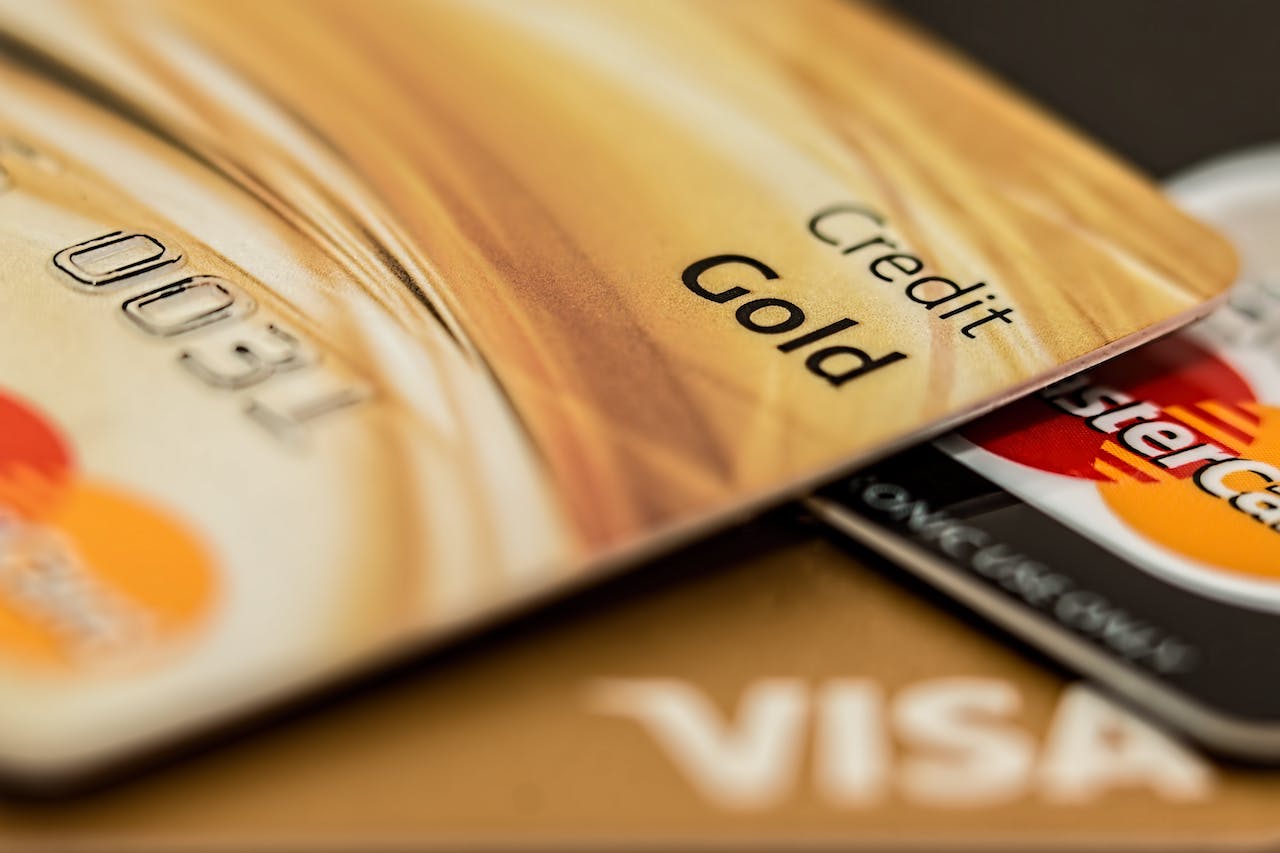Drawbacks Of Using Direct Bank Feeds For Credit Card Reconciliations
When discussing the "drawbacks of using direct bank feeds for credit card reconciliations," it's crucial to understand both the convenience and the challenges it presents.

Morgan Barrons
Dec 01, 2023
The use of direct bank feeds has revolutionized financial reconciliation processes, offering unparalleled convenience and accuracy in managing credit card transactions. However, in the pursuit of efficiency, it's essential to recognize the potential drawbacks associated with relying solely on this technology.
Accountants are well aware of the difficulties involved in managing and reconciling credit card expenses, particularly when they are forced to rely on interrupted bank feeds. The practice of reconciling bank statements with the internal cash book kept by firms is known as bank account reconciliation. In this article, we will discuss thedrawbacks of using direct bank feeds for credit card reconciliations.
What Is Credit Card Reconciliation?
Accountants use a technique called credit card reconciliation to make sure that the transactions on a company's credit card statement match those in the general ledger. Companies must be aware that these transactions occurred and that the costs incurred by both parties are legitimate and proper in order to disclose financial information in an accurate and timely manner.
When accounting is done by hand, accountants sit down and match the general ledger and credit card statements of a business. They may close the books for the month and know that the ledger was accurately entered if all payments are matched on both ends.
In the event that there are disparities, the financial controller would be accountable for providing clarification on these figures. They must manually ascertain who paid the extra payments. While a more substantial financial close takes place around the conclusion of each quarter or financial year, the reconciliation procedure usually takes place at the end of each month.
Types Of Credit Card Reconciliation
Credit card payments can be made in relation to income as well as spending. Companies need to be aware of two different kinds of credit card reconciliation:
Credit Card Statements
Statements from credit cards may be reconciled. Your accountants must cross-reference all credit card transactions made by your organization with monthly credit card statements in order to ensure the accuracy of your records. Examining individual credit card bills for each employee credit card you issue is important.
Credit Card Merchant Services
Reconciliation may also happen when clients use credit cards to make payments to you. In this instance, the payment first passes via the middleman in these transactions—your merchant account provider before it reaches your corporate bank account.
Why Do Businesses Use Credit Cards?
When more steps are required for reconciliation, one could wonder why businesses still utilize credit cards for business-to-business transactions. Credit cards play an essential function when it comes to accessible payment methods. Invoices are helpful when making big purchases.
For some reoccurring costs, direct debits work better. However, "day-to-day" spending, which usually originates from employees, is one of the most frequent transactions made by firms, and here is where credit cards really shine. Employees are more inclined to utilize business credit cards rather than pay cash for necessary costs like travel and advertising services.
Not only are credit cards more widely accepted, but they also greatly simplify company transactions; you no longer need to travel to the bank or complete a purchase order in order to make a simple payment.
Disadvantages Of Using Direct Bank Feeds For Credit Card Reconciliations
Delayed Reconciliations And Inaccuracies
Using direct bank feeds might seem convenient, but they often need help with being accurate. This happens because banks use complicated systems to create these feeds, and that can make mistakes in how they categorize transactions or even make duplicates.
These mistakes can create significant challenges when a business is trying to make sure its credit card transactions match up correctly. It can be challenging for businesses to keep a clear view of their finances with these inaccuracies. Also, these wrong data from direct bank feeds can lead to mistakes in the records, which can cause problems with accounting and following the rules.
Direct bank feeds can also be unreliable, causing delays in the process of making sure everything matches up. When these feeds stop working or take a long time to update, the finance team has to wait to finish their work. This can slow down the whole financial process and make it harder for the company to make intelligent choices quickly.
It can even strain relationships with people the company owes money to because payments might be late because of these problems. All these issues with direct bank feeds can affect the company's financial reports and decisions.
When the data is correct or slow, it can lead to good choices and problems with money management. Plus, if the mistakes keep happening, it's hard to see any trends or problems in the money data, which makes it challenging to fix any money issues ahead of time. So, while direct bank feeds are easy to use, they come with some big problems that businesses need to watch out for.
Manual Transaction Data Handling
One significant drawback of relying solely on direct bank feeds for credit card reconciliations is the labor-intensive process involved.
The absence of programmatic access to transaction data often forces finance teams to resort to manual methods such as downloading and uploading CSV or Excel files. This not only consumes valuable time but also increases the likelihood of errors in data entry.
Cumbersome Receipt Submission And Tracking
Another area for improvement is the cumbersome nature of receipt submission and tracking. With seamless integration, employees may be able to submit receipts, leading to missing documentation.
This can result in human errors and delayed expense report submissions, further complicating the reconciliation process. Such inefficiencies can hinder financial accuracy and compliance.
Increased Workload For Accountants
Direct bank feeds may relieve some manual entry tasks, but they can also introduce new burdens. Accountants often find themselves manually checking credit card statements for discrepancies and initiating follow-ups on disputed transactions.
This added workload not only strains resources but can also delay the resolution of financial discrepancies.
Limited Control And Visibility Over Transaction Data With Direct Bank Feeds
When it comes to credit card reconciliations, using direct bank feeds is a convenient option at first glance. However, one significant drawback is the limited control and visibility over transaction data.
With direct bank feeds, businesses often find themselves at the mercy of their financial institutions. They need more influence over the timing and accuracy of transaction updates, which can result in discrepancies and delays in reconciling their credit card statements.
Dependence On Banks For Credit Card Transaction Data Availability
Direct bank feeds for credit card reconciliations mean heavy dependence on banks for transaction data availability. Businesses relying solely on these feeds have no control over the data retrieval process.
If the bank experiences technical issues, delays, or inaccuracies in updating transaction information, it can hinder the reconciliation process and disrupt financial operations. This dependence can be particularly challenging when dealing with multiple credit cards or accounts from different banks.
Impact On Decision-Making And Financial Control
The drawbacks of using direct bank feeds for credit card reconciliations can have a profound impact on decision-making and financial control. Only accurate or timely transaction data can lead to informed decisions, budgeting errors, and financial instability.
With timely and reliable information, businesses may be able to maintain a clear overview of their financial health, making it easier to plan for future expenses or investments.
Overreliance On Bank Feeds For Credit Card Reconciliation
Trusting bank feeds entirely for credit card reconciliations is a common pitfall that can lead to errors and missed transactions. Automated data feeds simplify the process but don't always distinguish between pending and cleared transactions, resulting in potential duplicate entries.
Over time, this can distort your financial records, leading to incorrect balances and financial inaccuracies.
Risk Of Incorrect Refunds And Overcharging
Another drawback is the failure of bank feeds to catch incorrect refunds consistently and overcharges by credit card providers.
Depending solely on these feeds might mean you miss costly errors that impact your finances. The consequence could be financial losses that go unnoticed until it's too late.
Compliance And Accuracy Concerns
Maintaining precise financial records is paramount for regulatory compliance. An overreliance on bank feeds can jeopardize your compliance efforts, potentially leading to fines or legal complications.
To mitigate these risks, it's crucial to strike a balance between automated bank feeds and manual reconciliation processes, ensuring the accuracy of your financial data and safeguarding your business's compliance status.
Difference Between Real-Time Feeds And Direct Bank Feeds
Real-Time Credit Card Feeds
Without relying on the issuing bank, real-time credit card feeds are collections of card transaction data that are obtained straight from credit card networks such as Visa and Mastercard. As soon as a transaction occurs, this data is obtained.
It may then be utilized to monitor and manage expenditures, automatically reconcile credit card transactions, keep track of budgets, and spot fraudulent activity.
Direct Bank Feeds
Depending on your card program, direct bank feeds link to your bank account and import transactions into your accounting software on a regular basis, such as weekly, monthly, or daily.
The issue with bank feeds is that, while they are sometimes accessible to SMB clients, they are not always real-time. The week or month-long delay indicates that the reconciliation procedure is not instantaneous but rather adheres to a weekly or monthly timetable.
Why Should Businesses Move Away From Direct Bank Feeds?
In today's fast-paced business environment, efficiency and accuracy in financial management are paramount for small and medium-sized businesses (SMBs). Traditional methods of accessing transaction data through direct bank feeds may no longer be the optimal choice.
Challenges With Direct Bank Feeds
- Limited Programmatic Access- SMBs face difficulties accessing transaction data through direct bank feeds, often not meeting the bank's requirements, which results in manual CSV or Excel file downloads and uploads.
- Complex Setup Process - Setting up direct bank feeds involves a laborious offline authorization process with the bank, customers, card networks, and expense management vendors, taking 2-3 weeks for each customer.
- Delayed Transaction Data- Transaction data is only available after credit card settlement, causing delays of 24-72 hours.
Advantages Of Real-Time Credit Card Feeds
- Instant Access - Real-time credit card feeds provide immediate access to transaction data, regardless of the bank partner or credit card program.
- Simplified Setup- Setting up real-time feeds is quick and easy, with employees entering and verifying card details in minutes, and data flows in immediately.
- Benefits of Direct Connection- Directly connecting with credit card networks like Visa and Mastercard bypasses issues with direct bank feeds, offering real-time transaction data for existing credit cards.
- Efficiency and Security - Instant receipt tracking and automated reconciliations eliminate manual efforts, allowing employees to focus on their work. This results in time savings, accurate forecasts, and reduced fraud risk through instant transaction data access.
What Does The Credit Card Reconciliation Process Look Like?
The following steps outline a typical credit card reconciliation process for a business. Finance teams generally log everything they do here for auditing purposes.
- Gathering all necessary documentation- Collect all credit card account statements, invoices, and receipts (which serve as evidence of expenditures) related to every account in the company. If you don’t have a centralized method to gather the data in an accounting system, you might have to go after each employee separately to do this.
- Putting everything in order- To make organizing and looking through financial information easier, we advise digitizing your records. Receipt scanners can be used for this by staff members.
- Cross-referencing with the general ledger- Make sure that all expenses, including interest and credit card fees, are recorded in the general ledger. To ensure that everything on your credit card statements is accounted for, double-check your transactions against your documented costs.
- Searching for typical mistakes- Refunded purchases, unsuccessful transactions, and duplicate charges are common causes of discrepancies.
- Discrepancy investigation- Get ready to look into inconsistencies. If required, be prepared to challenge transactions with your credit card processor.
How To Prevent Errors When Using Direct Bank Feeds For Credit Card Reconciliations?
To prevent errors when using direct bank feeds for credit card reconciliations, consider the following tips:
- Regular reconciliation report- Prepare a reconciliation report at regular intervals to identify any discrepancies between the calculated bank balance and the actual bank balance.
- Verify bank feed accuracy- Do not trust bank feeds 100%, as they can sometimes have breaks or duplicates. Always run a reconciliation report to check for anything out of place.
- Double-check payment accounts- When marking sales or purchase invoices as paid, double-check the selected bank account in the drop-down menu to avoid reconciliation problems later on.
- Mark bills as paid- Ensure that bills entered in the system are marked as paid to avoid duplicate transactions during bank reconciliation.
- Use automation and rules- Utilize software that includes bank feeds and the ability to set up rules to streamline the reconciliation process and increase accuracy.
- Consider real-time credit card feeds - Real-time credit card feeds connect directly to card networks like Visa and Mastercard, eliminating the dependence on banks and speeding up the reconciliation process.
Frequently Asked Questions
What Are Some Drawbacks Of Using Direct Bank Feeds For Credit Card Reconciliations?
Drawbacks of direct bank feeds include potential delays, inaccuracies, manual transaction handling, and cumbersome receipt submission.
What Are The Key Steps In The Credit Card Reconciliation Process?
The credit card reconciliation process involves gathering documentation, digitizing records, cross-referencing with the general ledger, searching for common mistakes, and investigating discrepancies to maintain accurate financial records.
Considering All Of The Facts
It is crucial to understand the drawbacks of using direct bank feeds for credit card reconciliations. While direct bank feeds have undoubtedly streamlined credit card reconciliation processes, they are not without their significant drawbacks. These include delayed reconciliations, potential inaccuracies, manual data handling, and limited control over transaction data.
Considering these challenges, businesses should explore alternatives such as real-time credit card feeds. These offer instant data access, simplified setup, and increased efficiency. Striking a balance between automated and manual reconciliation processes is crucial to ensure financial accuracy, compliance, and well-informed decision-making.
This shift can enhance financial management, ultimately contributing to a company's success and stability in today's rapidly evolving business landscape.




